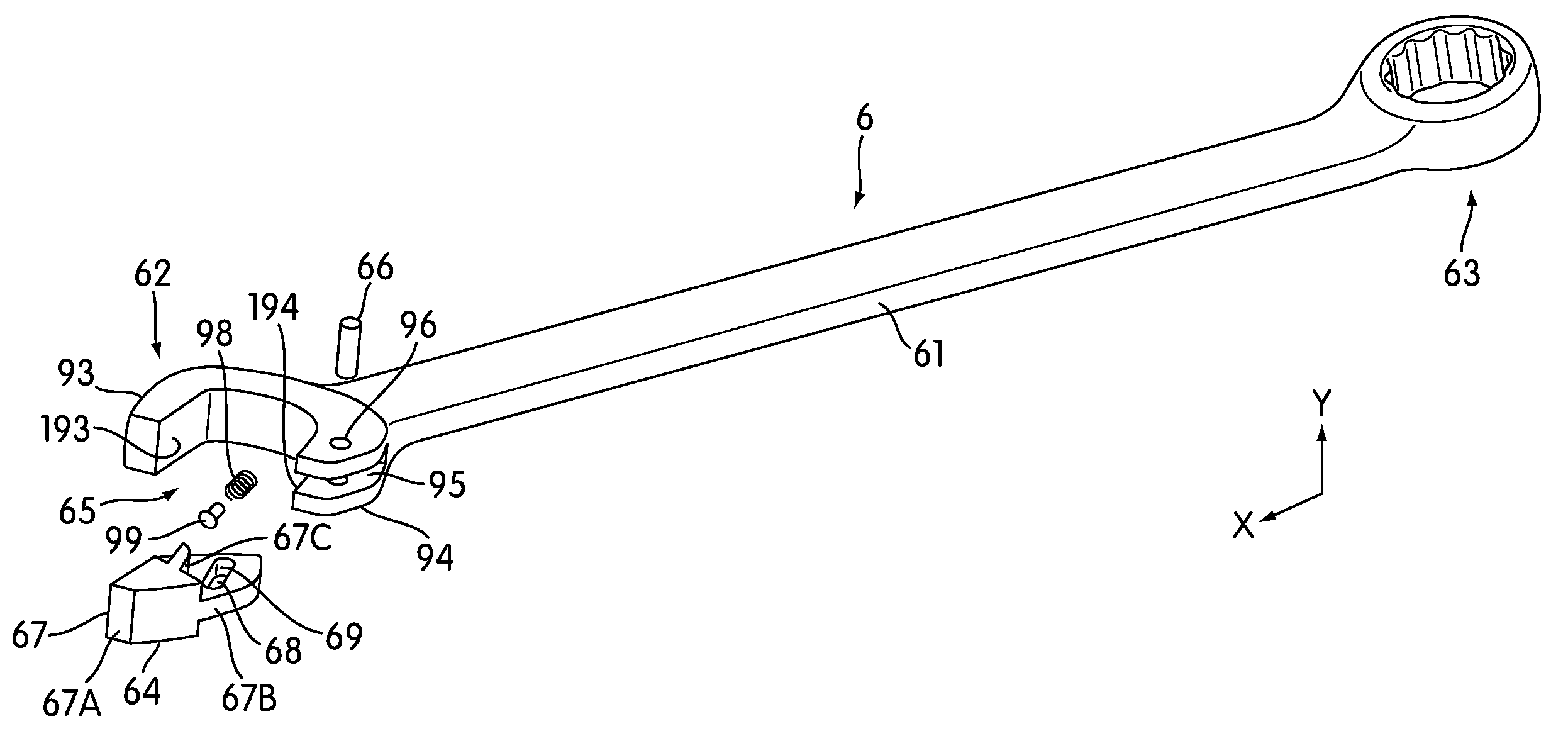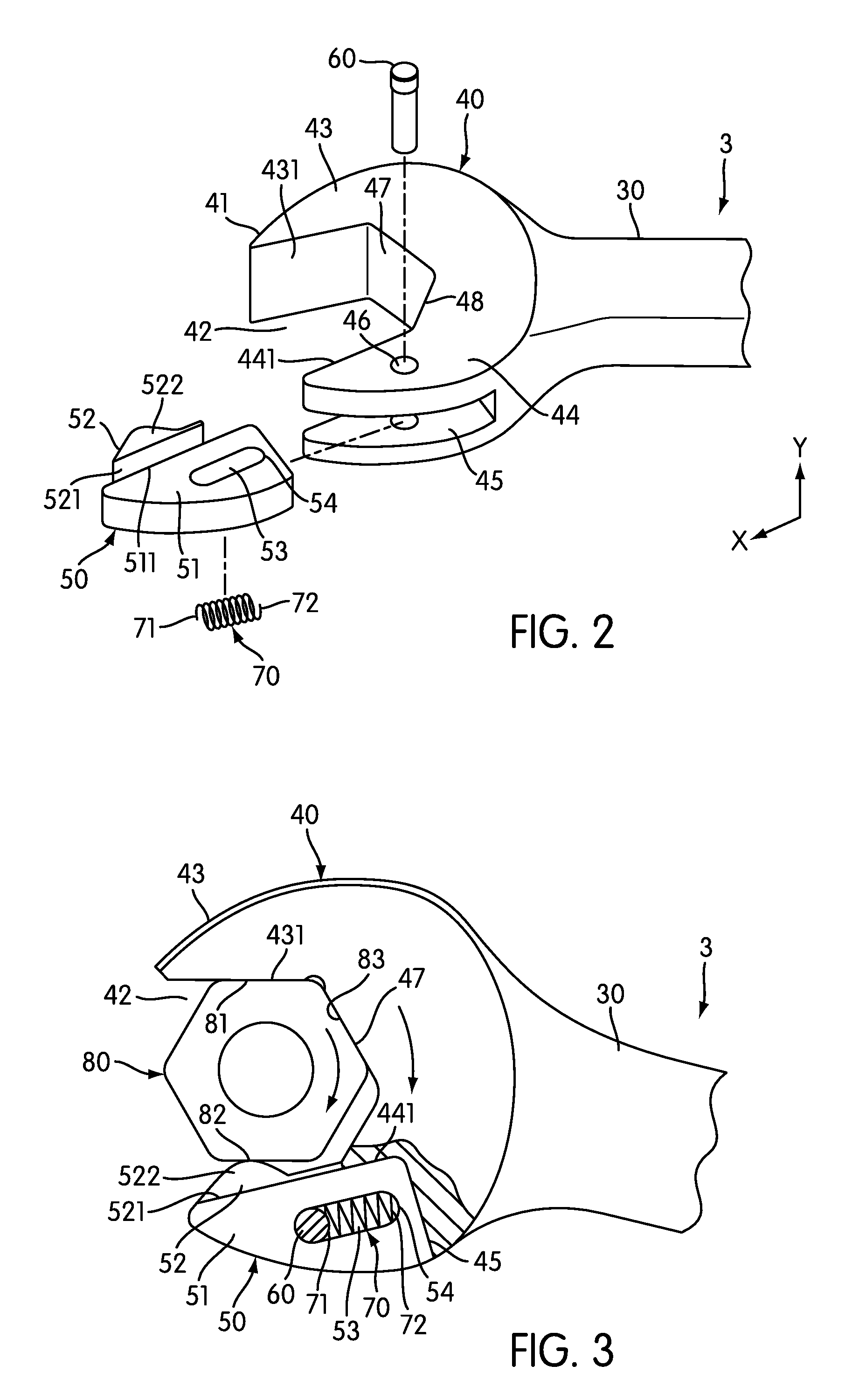Self-adjusting wrench
a self-adjusting, wrench technology, applied in the field of wrenches, can solve the problems of design limitations, inconvenient use of wrenches, etc., and achieve the effect of limiting the extent of relative movement and limiting the compression of resilient members
- Summary
- Abstract
- Description
- Claims
- Application Information
AI Technical Summary
Benefits of technology
Problems solved by technology
Method used
Image
Examples
Embodiment Construction
[0021]FIG. 2 is an exploded perspective view of an open-end wrench 3, according to an embodiment of the present invention and FIG. 3 is a combined elevational view and broken away sectional view of the open-end wrench 3. Open-end wrench 3 comprises a handle 30, a containing part 40, a chuck base 50, a dowel pin 60 and a resilient member 70.
[0022]The containing part 40 can be provided on one side of the handle 30 or on both sides of the handle 30. As used herein, the term containing part refers broadly to the open-ended region of an open ended wrench that receives a fastener or nut. In one embodiment, the containing part 40 includes containing groove 42 having an outer surface 41 which contacts handle 30. The containing groove 42 is configured to receive nut-locking component 80. The containing part 40 also includes a first jaw 43 and a second jaw 44 on opposite sides of containing groove 42. A sliding groove 45 is provided in the second jaw 44 along a first direction X. The sliding ...
PUM
 Login to View More
Login to View More Abstract
Description
Claims
Application Information
 Login to View More
Login to View More - R&D
- Intellectual Property
- Life Sciences
- Materials
- Tech Scout
- Unparalleled Data Quality
- Higher Quality Content
- 60% Fewer Hallucinations
Browse by: Latest US Patents, China's latest patents, Technical Efficacy Thesaurus, Application Domain, Technology Topic, Popular Technical Reports.
© 2025 PatSnap. All rights reserved.Legal|Privacy policy|Modern Slavery Act Transparency Statement|Sitemap|About US| Contact US: help@patsnap.com



